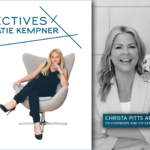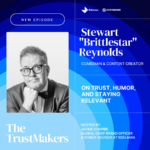By Matt Buckle, Managing Director / partner at Transmission
Marketing budgets are getting tighter, at 7.7% of a company’s revenue in 2025, down from 11.3% during 2015, and the pressure to convert sales is growing.
Modern marketers have an armoury of tools available to them to measure success. Click-through rates, bounce rates, heatmaps, funnel stages – we track everything that moves.
But in the battle to convert advertising into sales, we’re not always deploying the right tactics to drive success in the first place.
The ongoing economic conditions are pushing advertisers to put out reactive campaigns for short-term sales success, with little to no consideration for meaningful storytelling.
And it could be a fatal mistake.
If a sale is the holy grail, your story is the knight that tells the consumer the location and guides them through the woods to get there. It’s ever present and critical to achieve your commercial goals.
Set the scene through emotional impact
Brand storytelling is all about tapping into a consumer’s emotional need. It’s this need – not product descriptions – that drives sales. The level of emotion differs – buying a house is far more emotional than buying a toaster. But it’s always there.
Emotional buy in is what makes the difference. To get that, it’s all about the story you tell.
Right now, brands are overfocusing on what they think they need to tell their consumers, not what consumers need to hear. They have swathes of data on who their customers are and where they see their brand, but they’re failing to understand the customer story.
Take a cereal ad. Demographics might tell you a parent is listening to the radio at 7:30am. Great. But what else is happening at that moment? Maybe they’re refereeing arguments, making packed lunches, replying to emails, and trying not to burn the toast.
So how does your brand fit into that scene?
Because once you understand their daily story, you’re no longer just advertising. You’re offering relevance. Relief. Maybe even a moment of calm.
Crack this, and your story will undoubtedly become more convincing, and help sales flourish.
Storytelling wins the war, not the battle
There are lots of brands that do understand the power of storytelling for top of funnel, brand building campaigns.
But that’s often where they leave it.
They let that story hook in customers at the top and then rely on price and product features to fight the real battle further down the path to purchase. Those brands are missing a trick. Storytelling can be your secret weapon for conversion… if you keep the drumbeat going all the way through the sales funnel.
Plus, it’ll ensure long term brand affiliation. Reactionary tactics can boost sales in the short term but won’t guarantee repeat or long-term business. It’s the difference between winning the battle and the war.
The moral of the story belongs to consumers
Every story has a good old-fashioned hero that delivers the moral of the story. Heroes inspire emotional reactions as we relate to them or look up to them. When it comes to good brand storytelling, the hero should always be the customer.
Brands particularly good at showing this are unsurprisingly doing very well commercially.
The Omaze Million Pound House Draw focuses on the stories of the winners. They’re selling hope. Transformation. The possibility of a new life. Their ads don’t just show the house, they show real people winning, reacting, crying, celebrating. The consumer is the hero.
By placing the consumer at the heart of your brand’s narrative, you’ll leave a lasting emotional imprint that inspires them at the tills and long after.
In a noisy, metrics-driven world, brands that master storytelling will do more than convert – they’ll connect. And connection is what drives sales, repeat purchase, and long-term growth.











